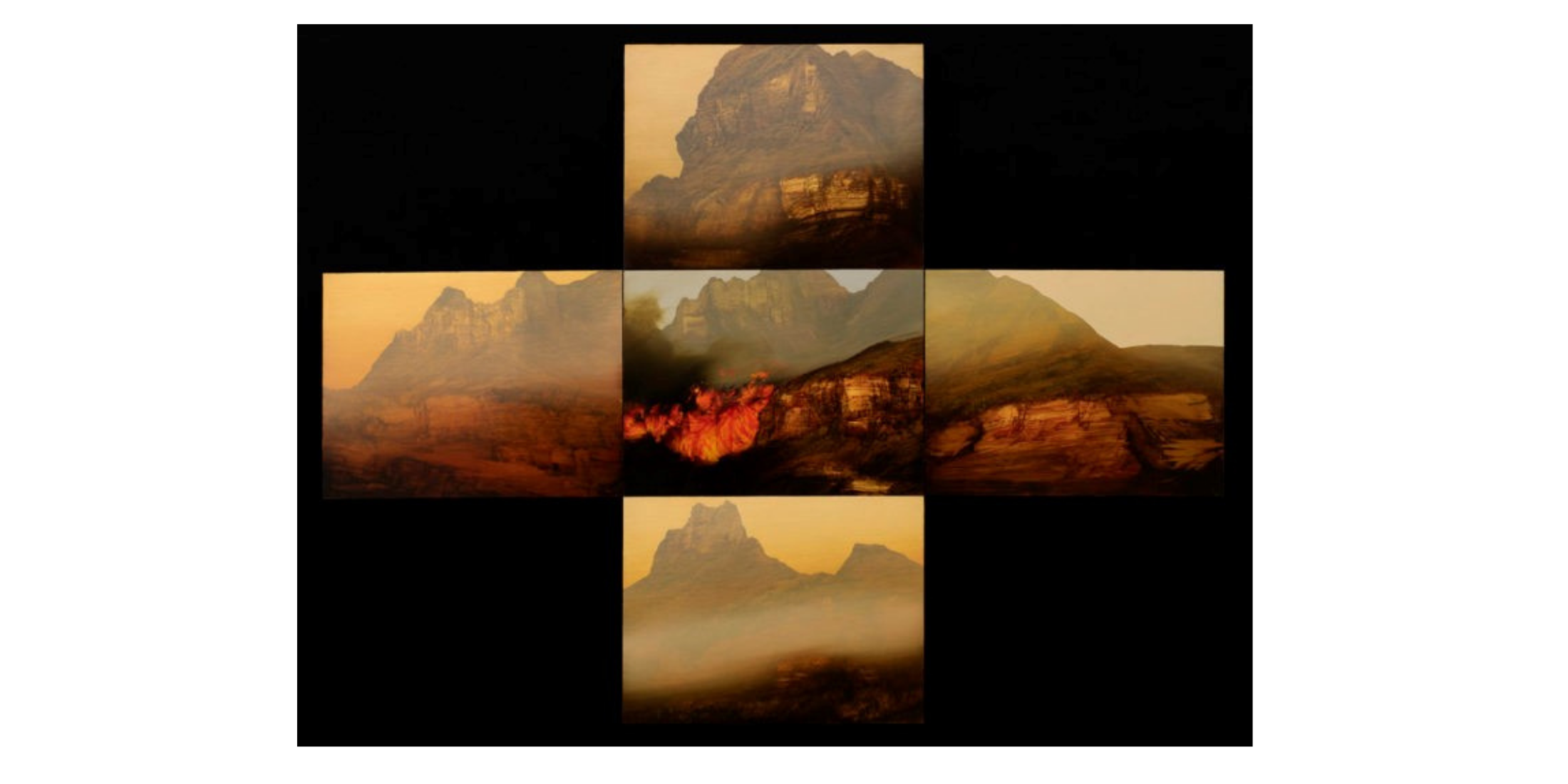Re-Imagining Landscape
June 21 2022 - October 15 2022
This exhibition pairs James Lavadour’s (Walla Walla/Confederated Tribes of the Umatilla) Sunflower, on loan from the TIA Collection, with selections from the MAM Collection.
The tradition of American landscape painting is synonymous with Western Art and shapes the most common misperceptions about nature, wilderness, and Montana—what the state looks like and who inhabits this place. These idealized, romantic depictions are an expected by-product of being surrounded by natural beauty and grand vistas, but Montana is a vast place filled with diverse people. The contemporary artists in this exhibition offer unique views and different perceptions of the landscape.
A common demarcation that artists use to imply a landscape is the horizon line. Used in the most minimal images, for example, Terry Karson’s collage works, a horizon is all that is needed to signal landscape to the viewer. While Elizabeth Hughes Bass paints a more traditional representation of landscape, her unique perspective forces the horizon line to the bottom of the painting and creates a visual tension in the composition that echoes the energy of the building storm.
James Lavadour takes the notion of unique perspectives to another level with his painting, Sunflower, whose subject is mountains, the most majestic and dominant feature in much of Western painting. However, his approach focuses on very small and specific sections of the mountain. Again, it is the horizon—in this case, rugged ridgelines—that denote the landscape and force the viewer to imagine the scale. Lavadour acknowledges the multiple perspectives necessary to view mountains. Indeed, any depiction of the landscape is necessarily a fragment, a composed view that contrasts the multisensory, 360° experience of the natural world.
Other artists such as Kristi Hager, Sheila Miles, Michael Parker, or Bill Stockton omit the horizon completely in favor of a close-up or imagined view, while Pat Kikut makes a political statement in placing a desolate landscape in a munitions box, possibly a nod to the West’s complicated history as a testing ground for new weaponry, including the nuclear bomb.
Finally, Terry Melton’s small, black-and-white landscapes from the folio Sobre La Mesa are a play on the words ‘on the table,’ a phrase that means to be under consideration or up for discussion, as well as suggesting the specific landform of the mesa—an isolated, flat-topped elevation, ridge, or hill bound on all sides by steep escarpments in a way that it stands out distinctly above a surrounding plain. His double entendre suggests a crossroads in how we think about and live in the West, and hopefully a deepening of our relationship with the land.
Collection artists include:
- Elizabeth Hughes Bass
- Paul Brach
- Russell Chatham (1939–2019)
- John Goodyear
- Kristi Hager
- Paul Harris
- Walter Hook
- Terry Jarson
- Pat Kikut
- Sheila Miles
- Michael Parker
- Bill Stockton


